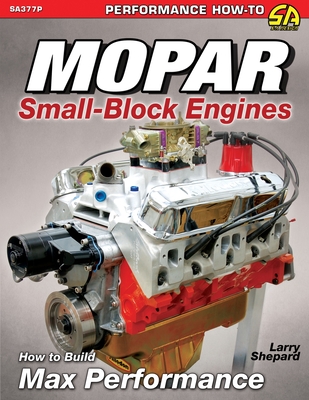
Mopar Small-Block Engines: How to Build Max Performance
Description
Hit the horsepower goal of your Mopar small-block engine using this guide that identifies the best parts and techniques to extract maximum performance from LA and Magnum powerplants.
Mopar engine expert and author Larry Shepard covers heads, cams, and valvetrain products and modifications that will give you more power. In addition, he provides exquisite details and in-depth buildup instruction for other essential components: blocks, cranks, pistons, rods, ignition systems, intakes, carburetors, and exhaust.
The Chrysler LA-series and Magnum small-blocks are powerful, efficient, and quick-revving engines that have dutifully powered millions of Chrysler/Dodge/Plymouth cars and trucks from 1964 to 2003. And the LA engine is also the powerplant for many classic Mopar muscle cars, including the Charger, Barracuda, Challenger, Dart, and others. While these venerable small-blocks have delivered impressive performance in stock trim, both can be easily modified to produce much greater power for almost any application.
The LA designates the small-block as "Lightweight A," which was a huge improvement over the previous generation. With its compact size, 50-pound weight savings, thin wall casting, and wedge heads, it cranked out a lot of torque and horsepower, so it was formidable competition on the street and track. The LA was offered in 273-, 318-, 340- and 360-ci inch iterations, and a full range of aftermarket products are offered for these engines. By 1992, the LA engine platform had evolved into the Magnum 5.2- and 5.9-liter engines and became the new standard of Mopar small-block performance.
If you own an LA small-block-powered Mopar car or truck, this invaluable guidance and instruction will allow you to optimize performance and maintain reliability.




























